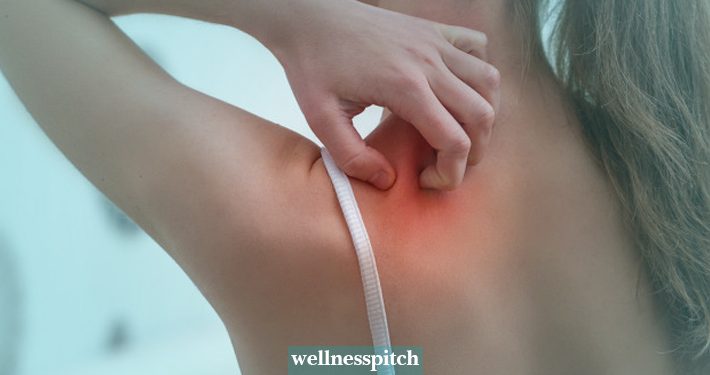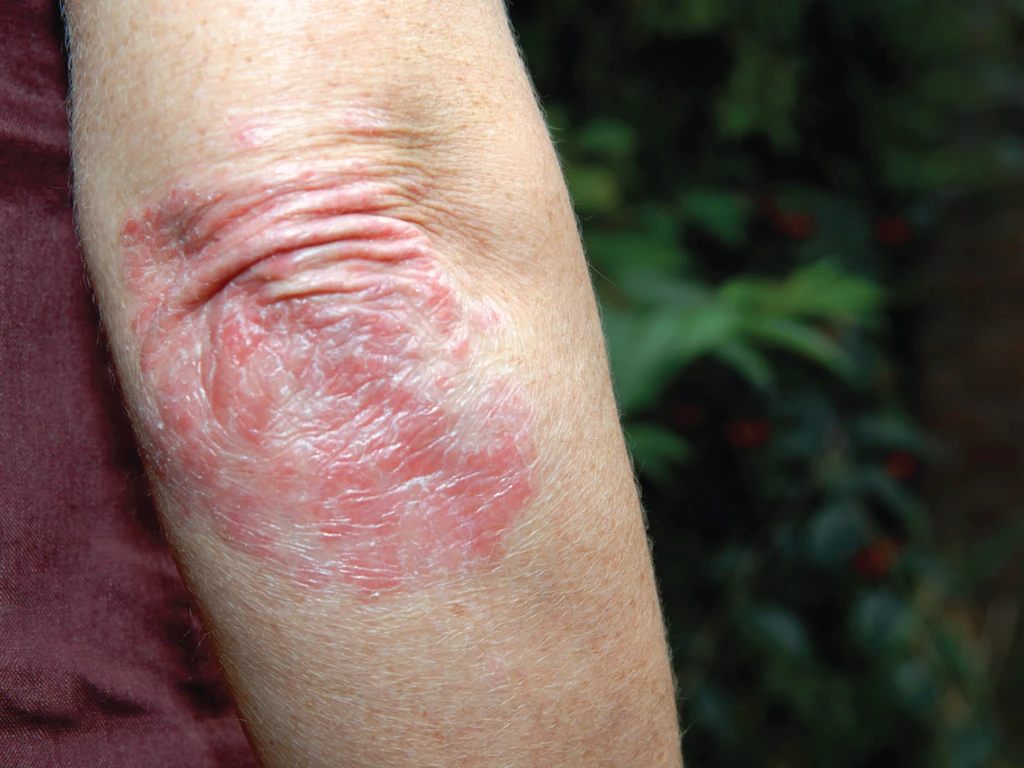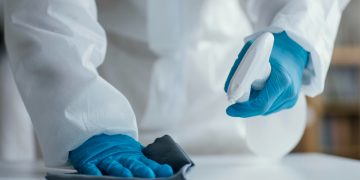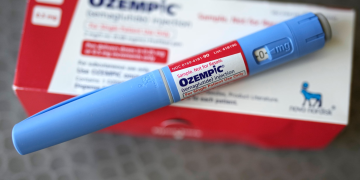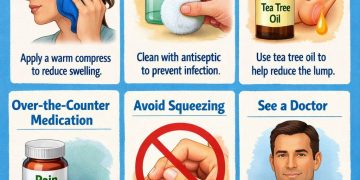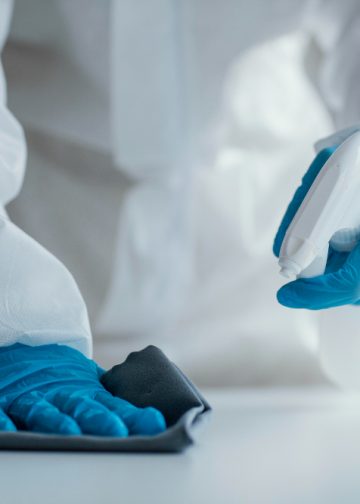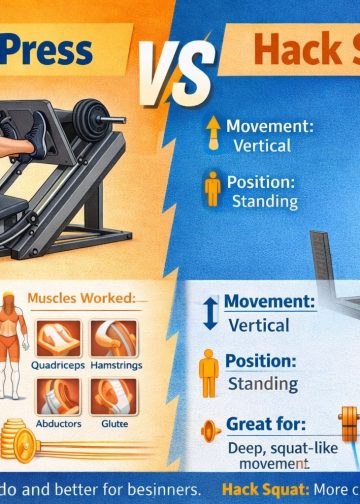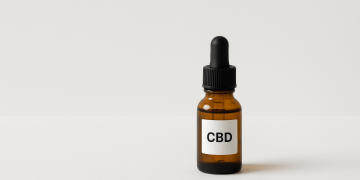Did you ever wonder what that red, itchy, and scaly patch on your elbow was? How many times a day do you scratch yourself because the itch got worse? Could it be Psoriasis?
Many of you may be suffering from it without knowing what it actually is. Psoriasis is a chronic medical condition that affects your skin. It is an autoimmune disease. This means that the immune system attacks the body instead of protecting it against foreign entities.
It causes red, itchy, scaly patches in the body. The most affected areas being knees, elbows, legs, and scalp. It can come and go every few weeks or months depending upon the severity of the condition.
It can sometimes be painful and cause scarring as well.
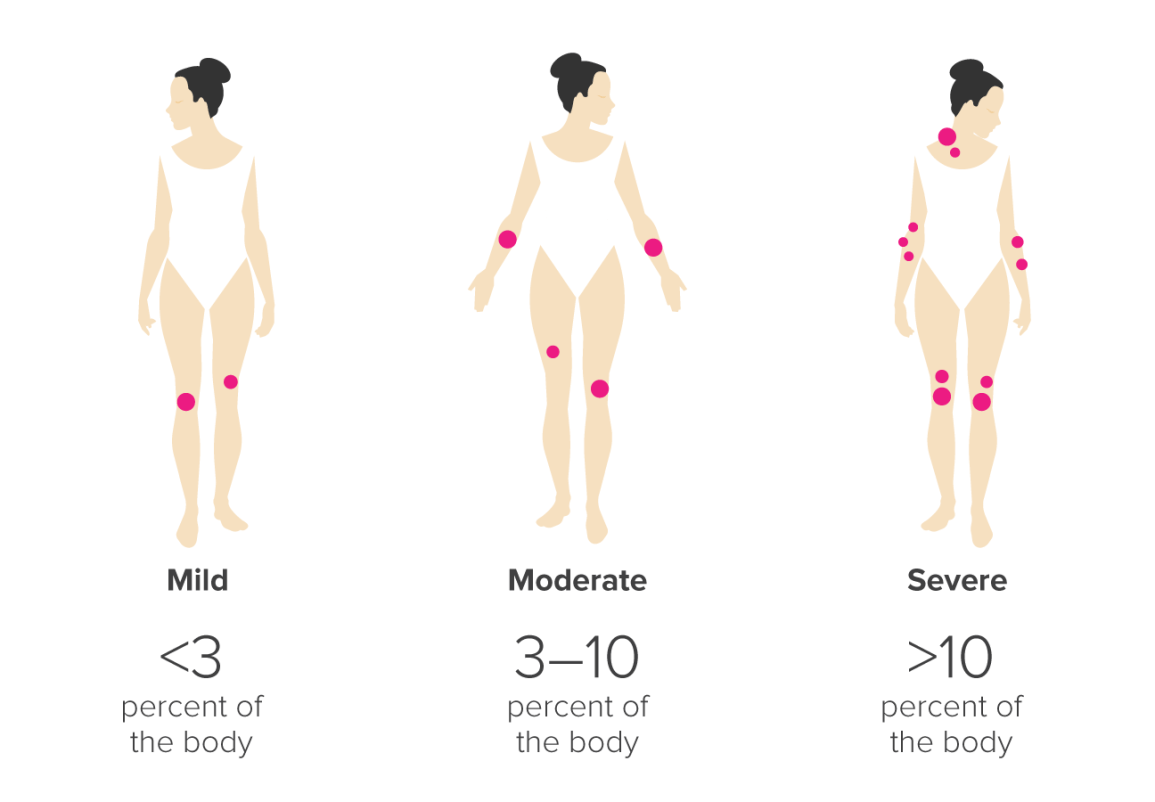
Symptoms of Psoriasis:
Symptoms can vary depending upon the type and individual.
- Red patches of skin
- Silvery scales like appearance
- Itchy and painful skin
- Swelling and stiffening of joints
- Soreness or burning sensation on the skin
- Thickened, ridged nails
- Dry or cracked skin
Areas affected by psoriasis:
- Knees
- Elbow
- Scalp
- Lower back
- Legs
- Soles of feet
- Face
- Palms
Triggering of Psoriasis:
Psoriasis may get triggered at any stage of life due to several factors. People who have psoriasis may be free of symptoms for many years.
- Stress
- Infections
- Weather
- Heavy alcohol consumption
- Certain Medications
- Skin injury
- Allergies
- Diet
These are the known factors so far. The medical history of an individual can tell us more about the hows and whys regarding a patient suffering from psoriasis.
What is the main Cause of Psoriasis:
In psoriasis, the skin cells grow and regenerate at an abnormal pace, causing the build-up on the skin. Besides the immune system, there are other factors that can be a cause behind it. For instance, it can be:
- Genetics
- Family history
- Environmental
Types of Psoriasis:
As symptoms and causes vary from individual to individual, so does the type.
Plaque psoriasis
80 percent of people with the condition suffer from plaque psoriasis. It causes inflamed, thick red, and patchy skin. It is also called Psoriasis Vulgaris.
If you feel the raised appearance of the skin, it is due to the buildup of dead skin cells. The most affected areas being: scalp, knees, elbows, and lower back.
Patches can be large and cover the body, causing a burning sensation, scratching can lead to scarring and worsening of the systems.
Guttate Psoriasis:
These appear in the form of red small spots. Being the second most common type, they affect around 8-10% of people suffering from this condition.
These are dot-like lesions often making their appearance in childhood or young adulthood. The most affected area is the torso and limbs and sometimes scalp.
The spots or patches are not as thick but can later develop into this condition. It can go away in a few weeks without treatment in some cases.
Inverse Psoriasis:
Smooth, shiny patches of red skin appear that worsen with friction and sweating. It is called flexural psoriasis. The most common areas affected are under the breasts, armpits, and groin area.
Skin scales are not shredded, Due to the moisture and sweat in the affected areas. It is possibly triggered by fungal infections. This type makes skin-on-skin contact irritating and uncomfortable.
This mostly occurs with any other type of psoriasis already affecting the body.
Pustular Psoriasis:
It is more common in adults. It takes on a blister appearance, which is white and pus-filled. Skin in the affected area is red and inflamed.
It is a fast-developing form and can be widespread easily. It is mostly localized in smaller areas such as hands and feet. The blister looks infectious but is not. It occurs rarely but is the most severe form of the disease.
Erythrodermic psoriasis:
It is the highly rare form of this condition and can most definitely cover your entire body with a red, peeling rash that itches and burns.
It needs immediate medical attention and can cause other health complications such as heart failure, or a severe infection.
Psoriatic arthritis:
It is a painful condition that affects 30-33% of people with psoriasis. Our immune system starts attacking our joints and skin, which can be quite painful and physically limiting. Hence, causing arthritis along with psoriasis.
It causes swelling of fingers and toes and stiff joints. It is accompanied by nail changes as well.
Nail psoriasis:
It causes pitting, abnormal nail growth, and discoloration of fingernails and toenails. Nails separate from the skin and can be tender and painful.
It attacks the body along with psoriatic arthritis.
Health complications due to psoriasis:
Psoriasis can pave the way to many other health risks:
- Obesity
- High blood pressure
- Inflammation
- Arthritis
- Type 2 diabetes
- Mental illness
- Congestive heart failure
- Depression
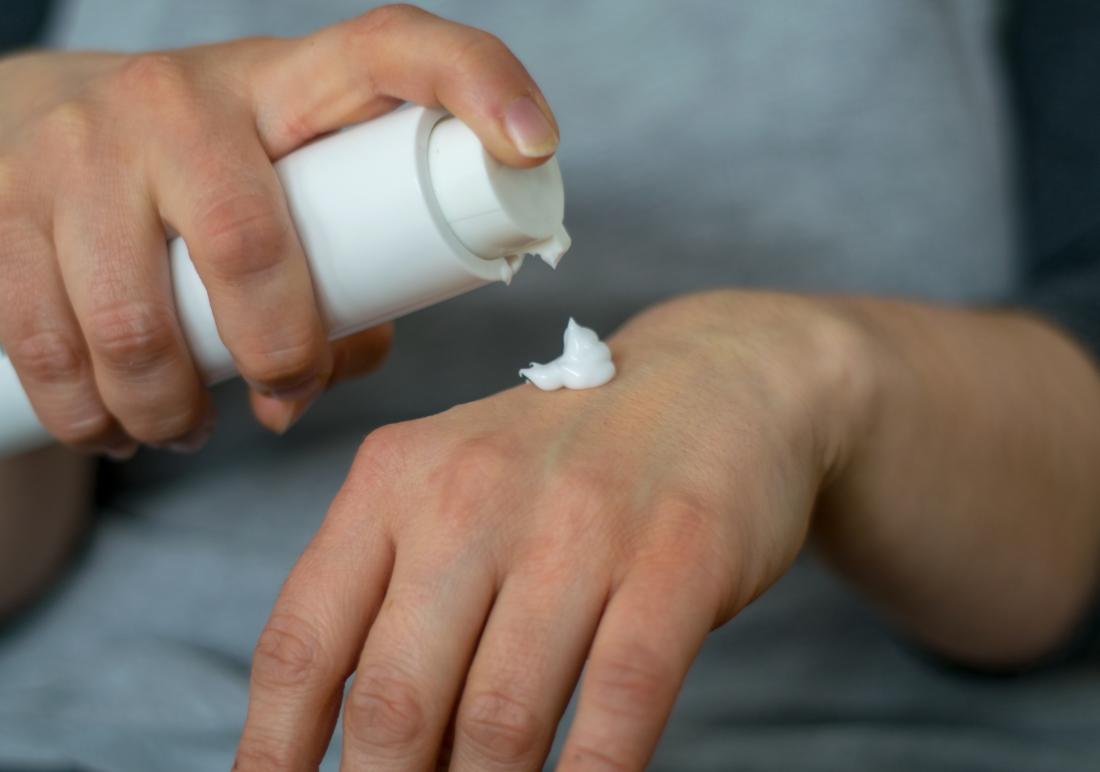
Treatment of psoriasis:
Psoriasis can be mild, moderate, and severe. Your treatment will depend on the severity of the condition and how responsive your body was to the previous treatment.
Treatment reduces inflammation and slows the growth of skin cells. The treatment is divided into:
-
Topical treatment
- Uses: Ointments, creams, lotions, gels, foams, sprays, and shampoos. Usually, this is the case for mild to moderate psoriasis
- Mild corticosteroids application to the sensitive areas
- Stronger cream: for tougher areas
- Vitamin D analogs cause less irritation when used but they are more expensive. They are used alone or with corticosteroids
- Topical retinoids are used once or twice daily
- Coal tar is used to reduce scaling, itching, and inflammation
- Salicylic acid is used in solution form or as shampoos.
- Calcineurin inhibitors and Anthralin are also used
-
Oral Medication:
Moderate to severe psoriasis is treated with oral medication. As well as those individuals who didn’t respond to other medications. These medications are prescribed for a short time because they may have severe side effects.
These medications include:
- Steroids
- Retinoids
- Methotrexate
- Cyclosporine
- Biologics
-
Light therapy:
Light therapy is a first-line treatment for moderate to severe psoriasis, either alone or in combination with medications. It involves exposing the skin to controlled amounts of natural or artificial light. Repeated treatments are necessary.
Light therapy methods are:
- Sunlight
- UVB broadband
- UVB narrowband
- PUVA
- Excimer Laser
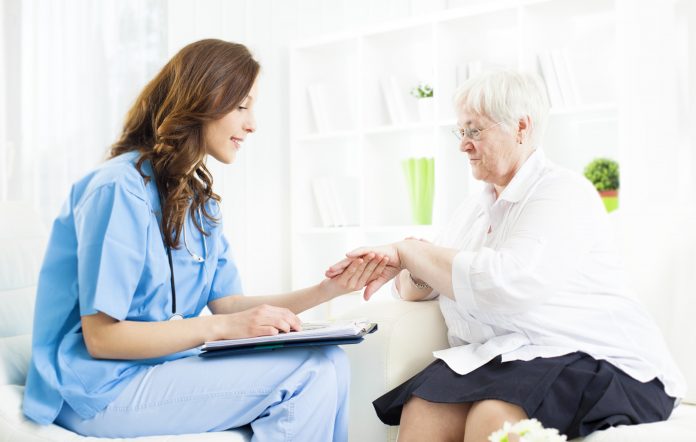
How to Live with psoriasis:
Living with this condition can be challenging but it is possible.
- Maintain a healthy diet rich in omega-3 fatty acids. Limit foods that increase your inflammation
- Limit sugary or refined or processed foods
- Manage your stress, so as not to trigger this condition
- Try yoga or meditation to relax and calm your mind
- Maintain a social life and talk with your family and friends
- Be confident and don’t shy away


